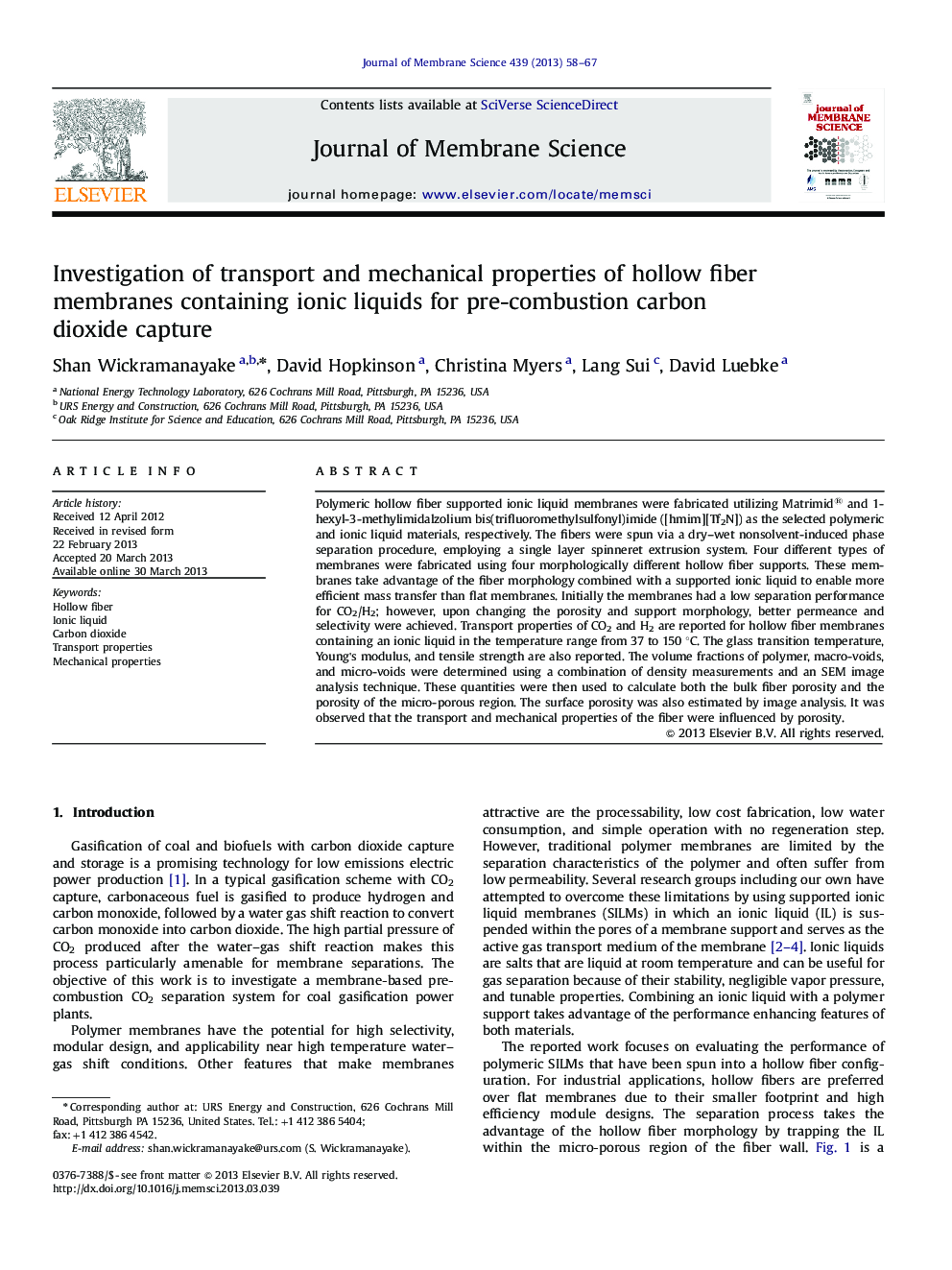| کد مقاله | کد نشریه | سال انتشار | مقاله انگلیسی | نسخه تمام متن |
|---|---|---|---|---|
| 634280 | 1456060 | 2013 | 10 صفحه PDF | دانلود رایگان |

• Supported ionic liquid membranes were spun into hollow fibers for CO2/H2 separation.
• Matrimid® and [hmim][Tf2N] were used as the polymeric and ionic liquid materials.
• Four different types of fibers were made with varying degrees of porosity.
• Increasing porosity resulted in higher CO2 permeance and selectivity.
• Tg, Young's modulus, and tensile strength of membrane fibers were measured.
Polymeric hollow fiber supported ionic liquid membranes were fabricated utilizing Matrimid® and 1-hexyl-3-methylimidalzolium bis(trifluoromethylsulfonyl)imide ([hmim][Tf2N]) as the selected polymeric and ionic liquid materials, respectively. The fibers were spun via a dry–wet nonsolvent-induced phase separation procedure, employing a single layer spinneret extrusion system. Four different types of membranes were fabricated using four morphologically different hollow fiber supports. These membranes take advantage of the fiber morphology combined with a supported ionic liquid to enable more efficient mass transfer than flat membranes. Initially the membranes had a low separation performance for CO2/H2; however, upon changing the porosity and support morphology, better permeance and selectivity were achieved. Transport properties of CO2 and H2 are reported for hollow fiber membranes containing an ionic liquid in the temperature range from 37 to 150 °C. The glass transition temperature, Young's modulus, and tensile strength are also reported. The volume fractions of polymer, macro-voids, and micro-voids were determined using a combination of density measurements and an SEM image analysis technique. These quantities were then used to calculate both the bulk fiber porosity and the porosity of the micro-porous region. The surface porosity was also estimated by image analysis. It was observed that the transport and mechanical properties of the fiber were influenced by porosity.
Journal: Journal of Membrane Science - Volume 439, 15 July 2013, Pages 58–67